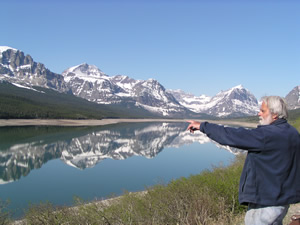
Articles remembering and praising Chuck Jonkel continue to roll in, including the below column by Larry Wilson and nice pieces by Rob Breeding and Chris Peterson . . .
Dr. Charles ‘Chuck’ Jonkel passed over The Great Divide this week. He never owned property on the North Fork, but spent so many years here researching bears that I feel he was an actual North Forker.
My first memories of Chuck came in the late 1950s or early 1960s when he was on the North Fork doing research on black bears. Mel Ruder did an extensive article in the HHN with pictures of Chuck going into the den of a hibernating black bear to work on the sleeping bear.
Also read:
The Great Bear’s BFF (Flathead Beacon)
Biologist Jonkel ‘spoke truth to power’ (Hungry Horse News)